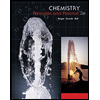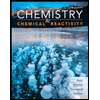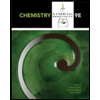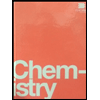The vapor pressure of benzene is 73.03 mm Hg at 25°C.How many grams of testosterone, C19H28O2, a nonvolatile, nonelectrolyte (MW = 288.4 g/mol), must be added to 263.1 grams of benzene to reduce the vapor pressure to 70.87 mm Hg?benzene = C6H6 = 78.12 g/mol._______g testosterone
The vapor pressure of benzene is 73.03 mm Hg at 25°C.How many grams of testosterone, C19H28O2, a nonvolatile, nonelectrolyte (MW = 288.4 g/mol), must be added to 263.1 grams of benzene to reduce the vapor pressure to 70.87 mm Hg?benzene = C6H6 = 78.12 g/mol._______g testosterone
Chemistry: The Molecular Science
5th Edition
ISBN:9781285199047
Author:John W. Moore, Conrad L. Stanitski
Publisher:John W. Moore, Conrad L. Stanitski
Chapter13: The Chemistry Of Solutes And Solutions
Section: Chapter Questions
Problem 70QRT
Related questions
Question
The vapor pressure of benzene is 73.03 mm Hg at 25°C.
How many grams of testosterone, C19H28O2, a nonvolatile, nonelectrolyte (MW = 288.4 g/mol), must be added to 263.1 grams of benzene to reduce the vapor pressure to 70.87 mm Hg?
benzene = C6H6 = 78.12 g/mol.
_______g testosterone
Expert Solution
This question has been solved!
Explore an expertly crafted, step-by-step solution for a thorough understanding of key concepts.
This is a popular solution!
Trending now
This is a popular solution!
Step by step
Solved in 3 steps with 2 images

Knowledge Booster
Learn more about
Need a deep-dive on the concept behind this application? Look no further. Learn more about this topic, chemistry and related others by exploring similar questions and additional content below.Recommended textbooks for you

Chemistry: The Molecular Science
Chemistry
ISBN:
9781285199047
Author:
John W. Moore, Conrad L. Stanitski
Publisher:
Cengage Learning

Chemistry: Principles and Reactions
Chemistry
ISBN:
9781305079373
Author:
William L. Masterton, Cecile N. Hurley
Publisher:
Cengage Learning

Chemistry: Principles and Practice
Chemistry
ISBN:
9780534420123
Author:
Daniel L. Reger, Scott R. Goode, David W. Ball, Edward Mercer
Publisher:
Cengage Learning

Chemistry: The Molecular Science
Chemistry
ISBN:
9781285199047
Author:
John W. Moore, Conrad L. Stanitski
Publisher:
Cengage Learning

Chemistry: Principles and Reactions
Chemistry
ISBN:
9781305079373
Author:
William L. Masterton, Cecile N. Hurley
Publisher:
Cengage Learning

Chemistry: Principles and Practice
Chemistry
ISBN:
9780534420123
Author:
Daniel L. Reger, Scott R. Goode, David W. Ball, Edward Mercer
Publisher:
Cengage Learning

Chemistry & Chemical Reactivity
Chemistry
ISBN:
9781337399074
Author:
John C. Kotz, Paul M. Treichel, John Townsend, David Treichel
Publisher:
Cengage Learning

Chemistry & Chemical Reactivity
Chemistry
ISBN:
9781133949640
Author:
John C. Kotz, Paul M. Treichel, John Townsend, David Treichel
Publisher:
Cengage Learning

Chemistry by OpenStax (2015-05-04)
Chemistry
ISBN:
9781938168390
Author:
Klaus Theopold, Richard H Langley, Paul Flowers, William R. Robinson, Mark Blaser
Publisher:
OpenStax